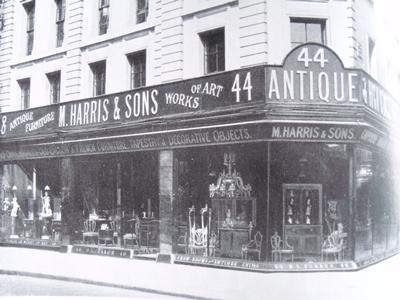Tracking the fortunes of the UK antiques trade online

A new online, interactive map has been launched which tracks the development and history of the UK antiques trade during the 20th century.
Researchers from the University of Southampton, led by the University of Leeds, aim to chart the changing geographical locations of dealers over a one-hundred year period. The map and dateline allows anyone to search for information about individual traders in Britain over decades and will eventually track the movement and trade of individual objects.
Co-investigator Dr Eleanor Quince, a historian at the University of Southampton, says the team now needs the public’s help to gather more information and expand the site: “Development of the map is ongoing and we hope this launch will encourage people to contribute to the database of information themselves, perhaps providing details of a relative or a dealer working in their local area – either now, or in the past.”
Lead academic Dr Mark Westgarth of the University of Leeds adds: “While it is very much work in progress at launch, with information being added all the time, eventually we hope all dealers trading in Britain from 1900-2000 will be included.”
The antiques trade has changed significantly in the last few decades, reaching its height in the 20th century, but more recently moving into decline – with approximately one third of dealerships closing in the final years of the century. It’s hoped the site will eventually include details of the estimated 100,000 dealers who traded in Britain in the 20th century.
Dr Quince says: “By recording the names and locations of traders across a one hundred year timeline, we can start to build up a picture of the industry – who was dealing in what and when, what they were charging, and who bought what and from whom.
“Many significant objects now in our national collections will have passed through the hands of an antiques dealer, but because we know so little about them this aspect of the object’s history remains unseen. By linking objects with dealers, we can uncover this hidden past.”
Researchers are gathering information from a number of sources including trade directories, archival sources, oral histories from retired or older dealers and now by crowd-sourcing information from the public. They are exploring the social, economic, political and cultural impact of the antiques trade in the UK.
The project is part of a wider body of research, Antique Dealers: the British Antiques Trade in the 20th Century, a Cultural Geography, funded by the Arts and Humanities Research Council – concluding in March 2016. Outputs include the interactive site, a conference and a publication.
The British art and antiques market is one of the oldest and most important in the world. Although its share is dwindling, last year it accounted for a 20 per cent slice of the booming £50bn global art market, second only to the US and China.
Mark Dodgson, Secretary General of the British Antique Dealers’ Association comments: “The UK has always been one of the world’s most significant locations for the trade in antiques, whether English furniture or Chinese ceramics. It is therefore fitting that a British university should have undertaken a study into this important aspect of our national life.”
The interactive map can be viewed here: https://antiquetrade.leeds.ac.uk/
People can get involved with the project here: http://www.antiquedealers.leeds.ac.uk/get-involved/
